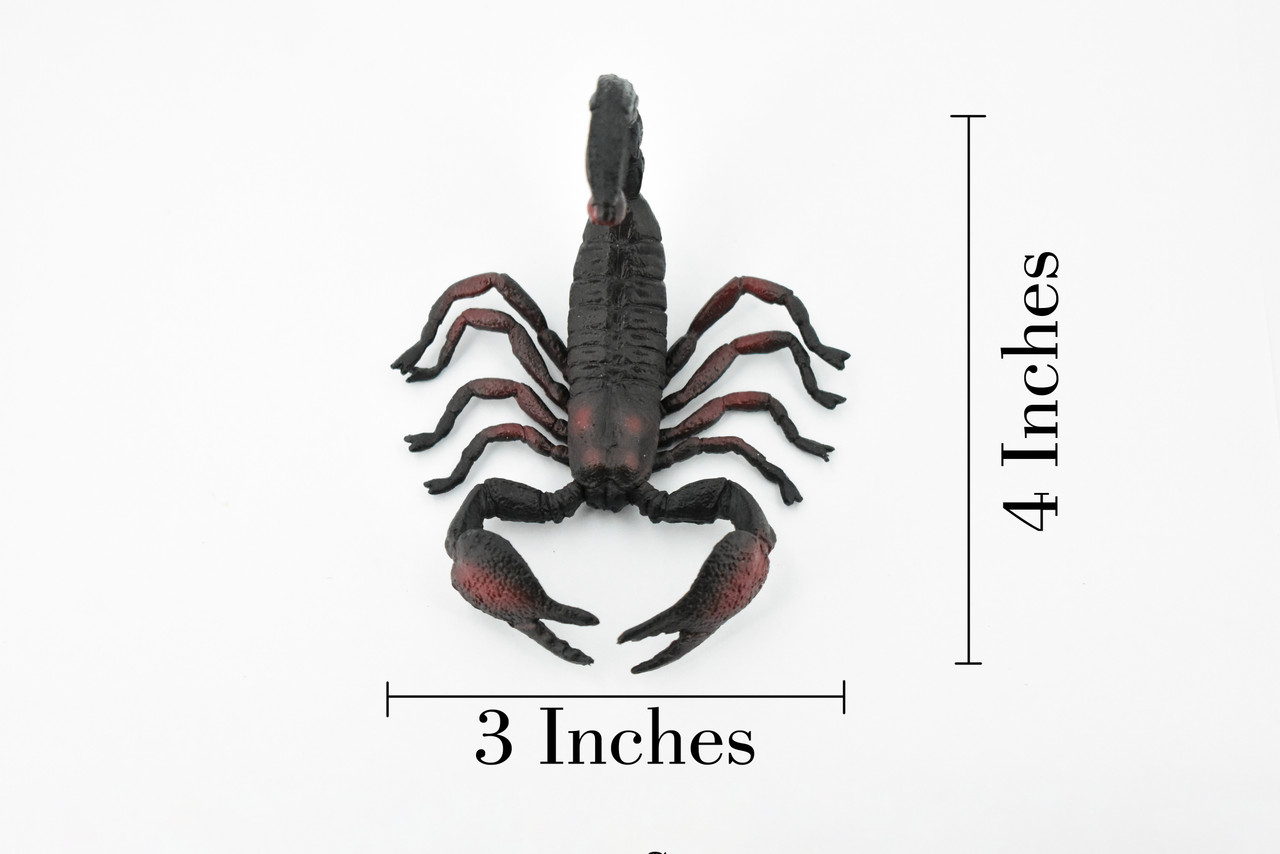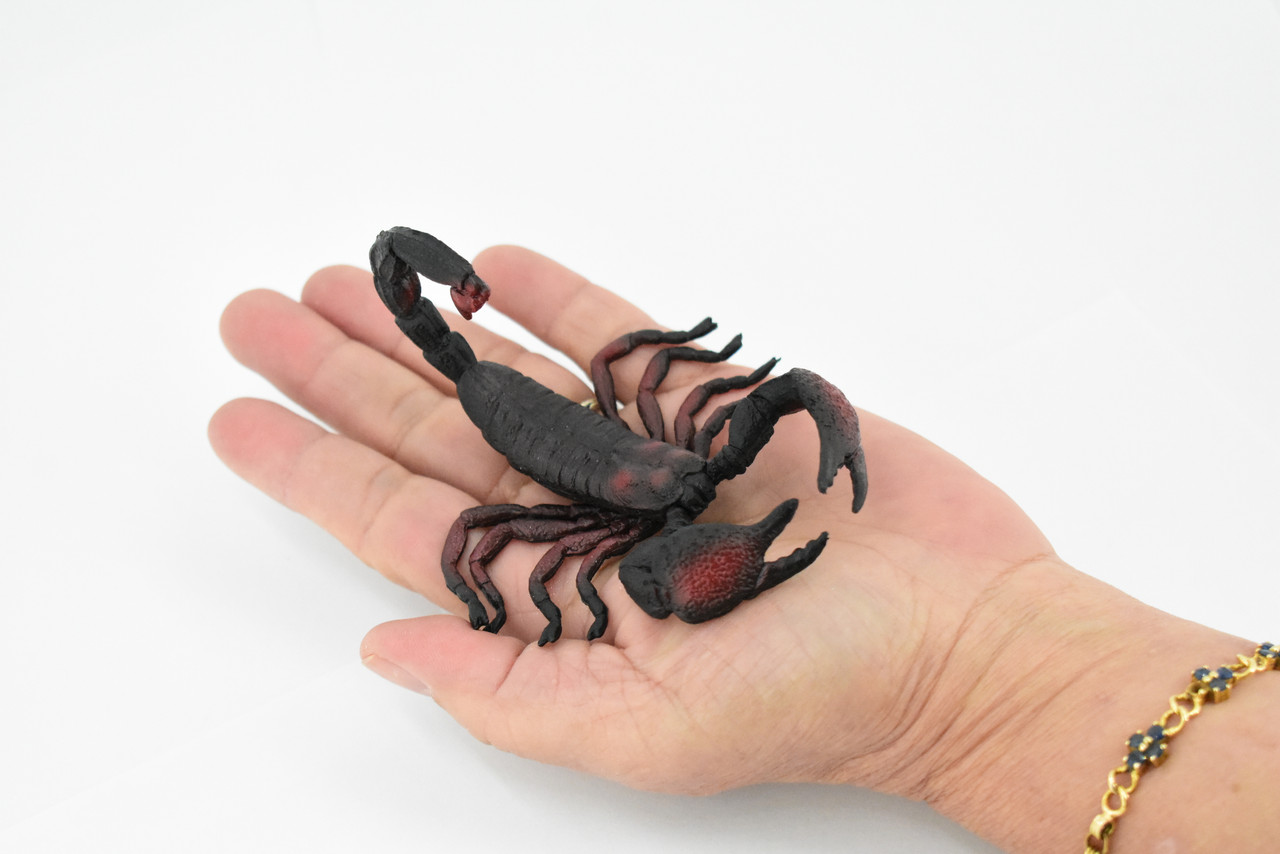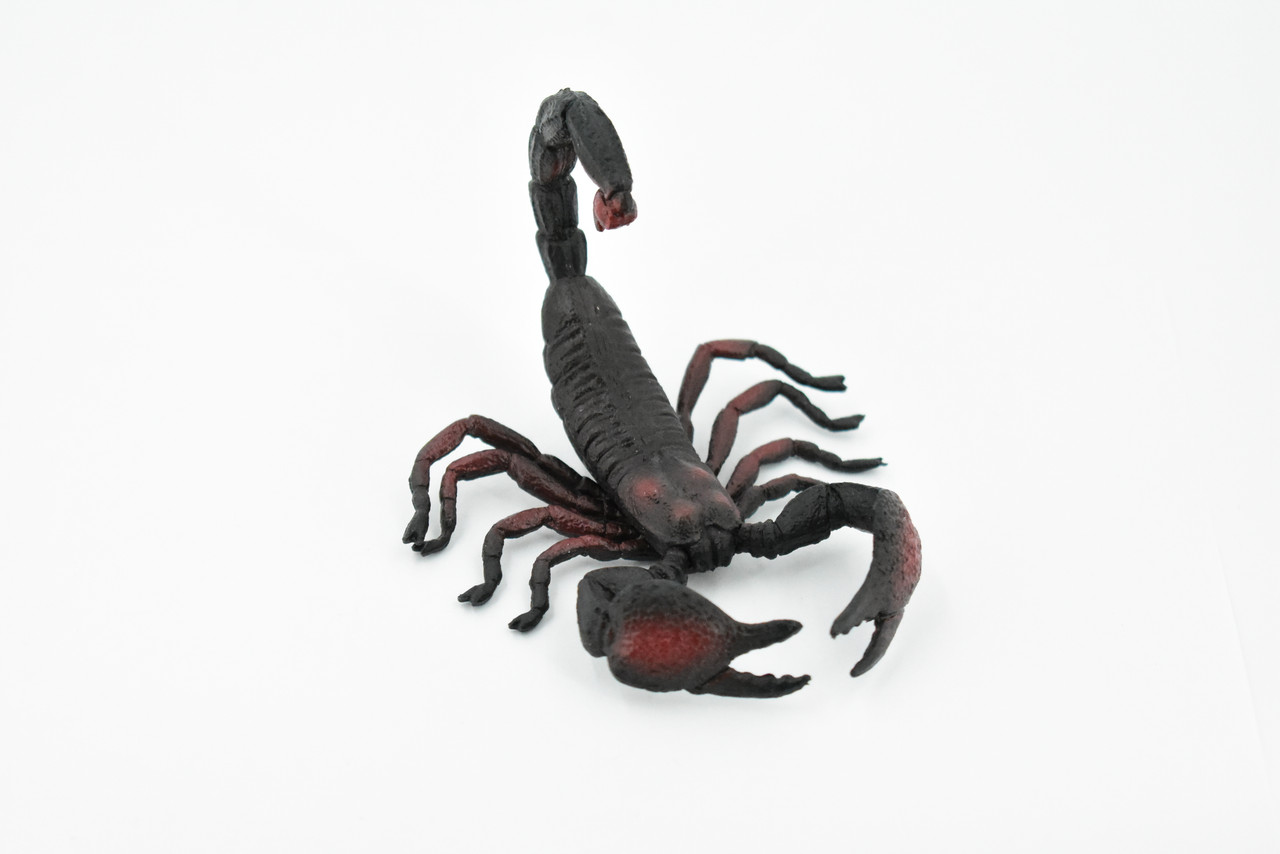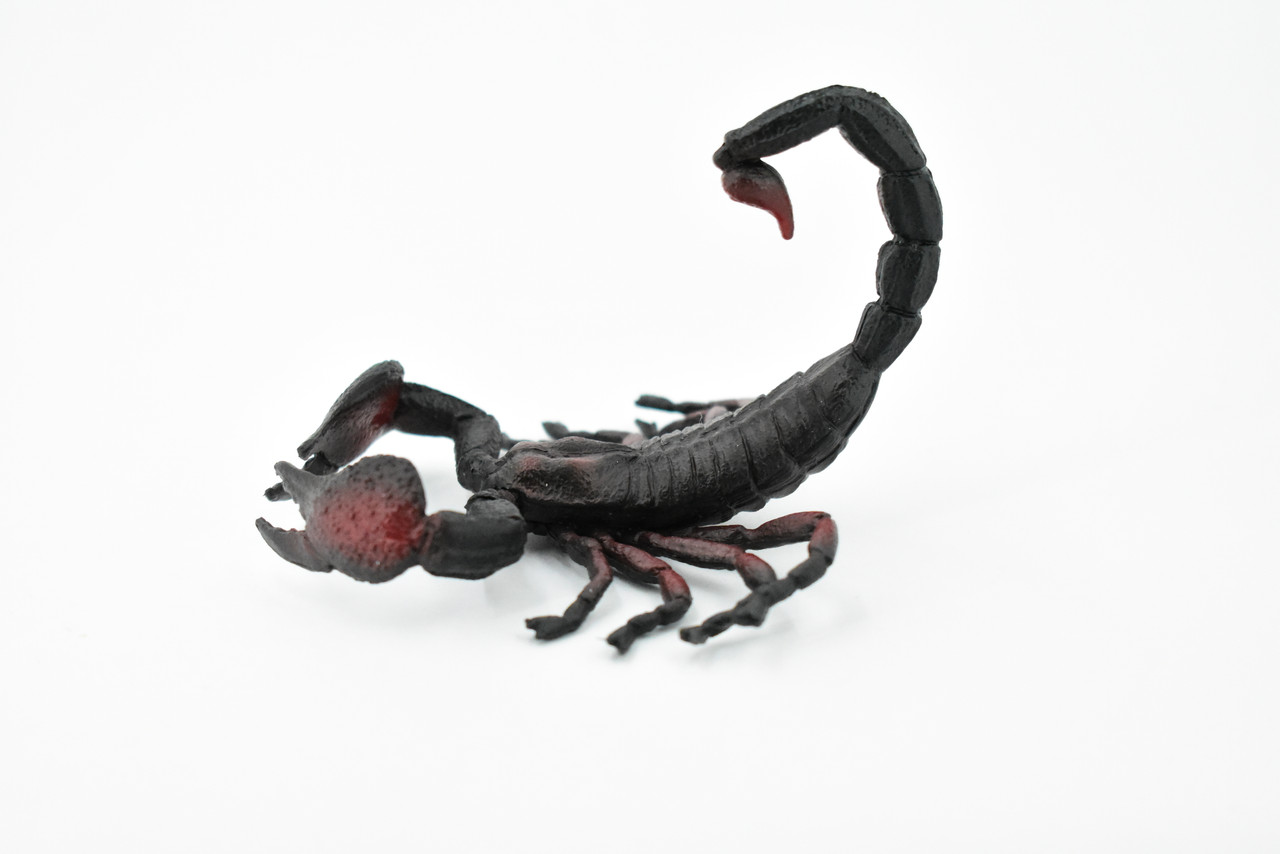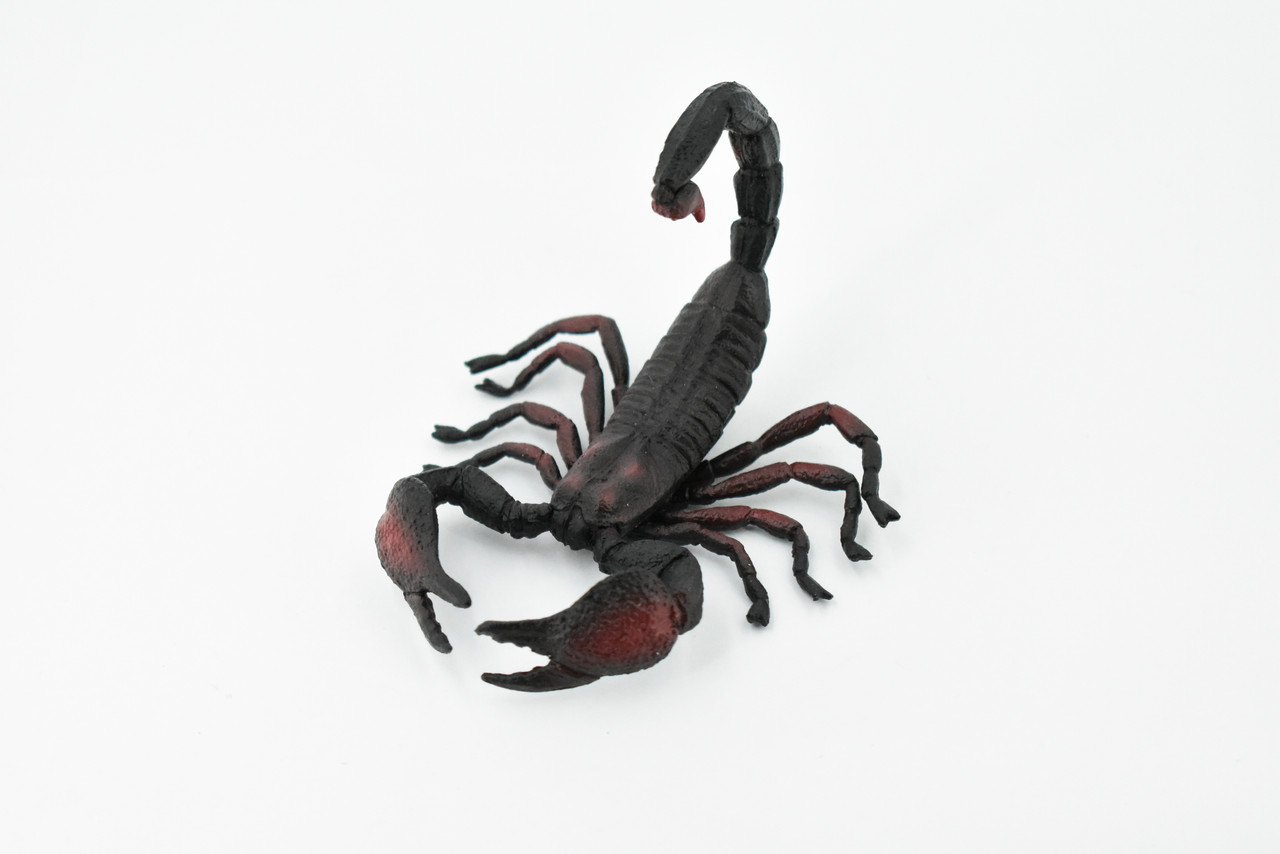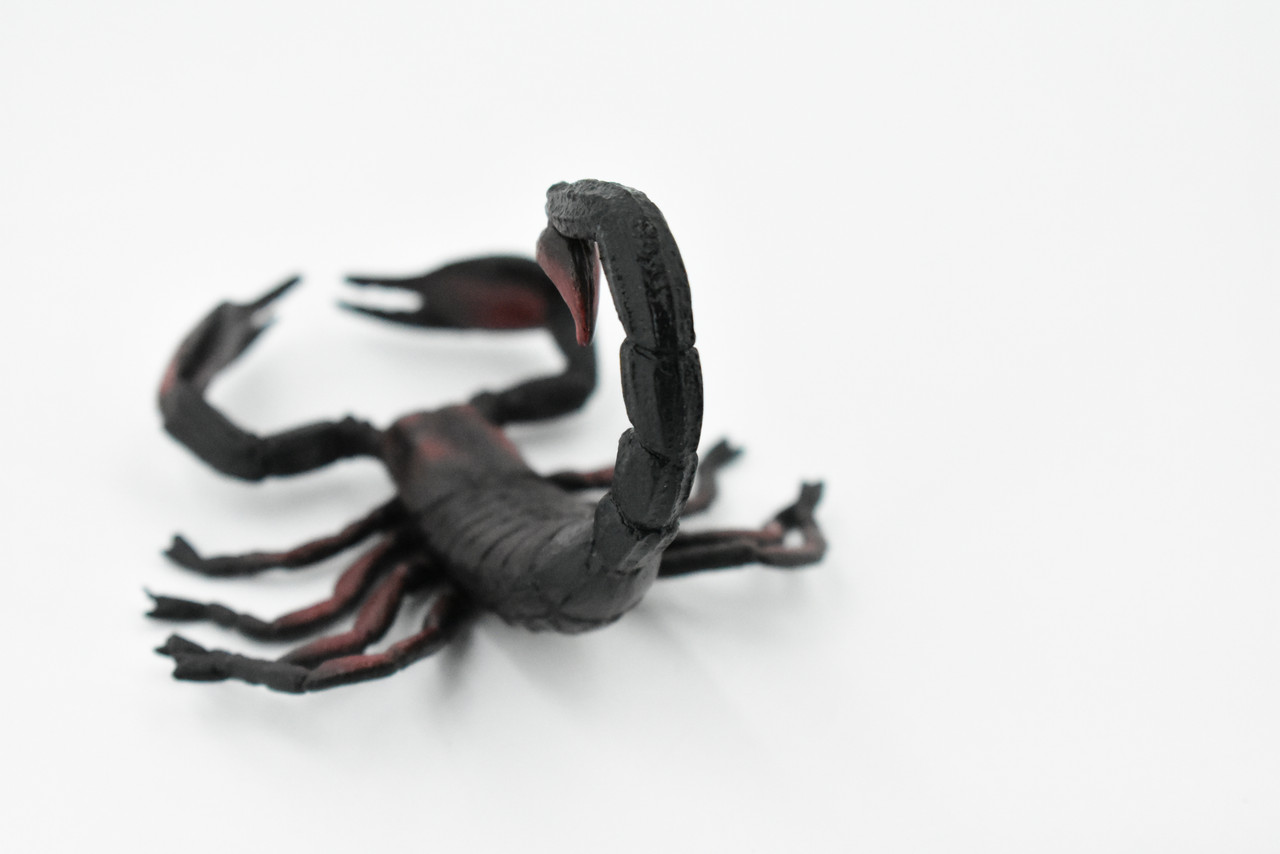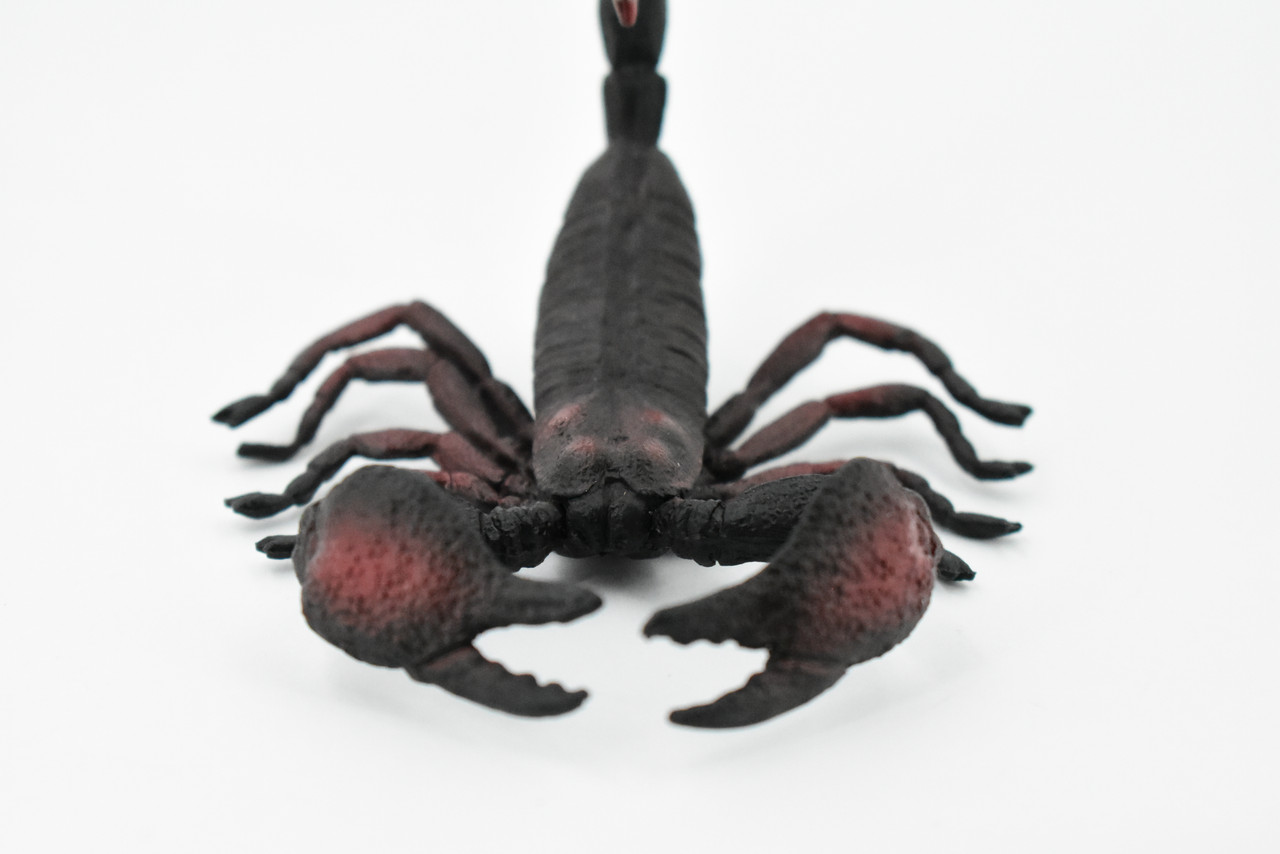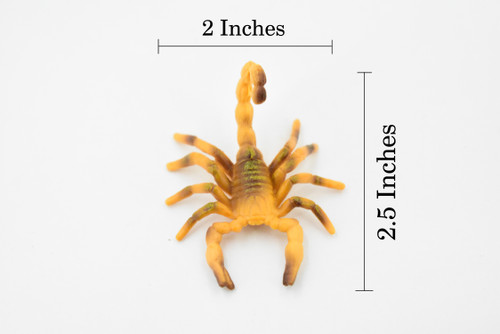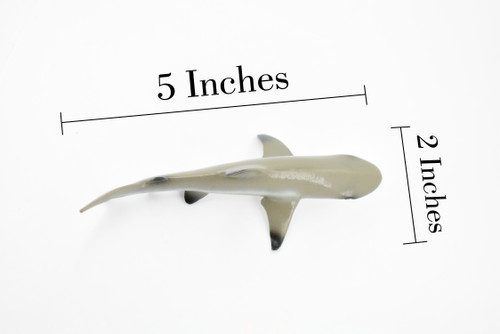Product Description
Scorpions are relatively large among terrestrial arthropods, with an average size of about 6 cm (2.5 inches). Scorpions exhibit few sexual differences, although males usually are more slender and have longer tails than females. In addition to desert habitats, scorpions have adapted to temperate, subtropical, and tropical environments such as grasslands, savannas, and forests. Scorpions lack conventional jaws, and their feeding habits are unusual. An additional pair of pincerlike appendages (chelicerae) are toothed, and, with these tools as well as the sharp edges of adjacent jaw like structures.
Scorpions have changed little in the 350 to 400 million years since they first climbed from the primal seas and took their place among earths first terrestrial arthropods.
The long, segmented body of the scorpion is divided into two obvious sections: the elliptically shaped body and the trade-mark tail. The body of the scorpion is divided into two parts, the cephalothorax and the mesosoma or preabdomen. The cephalothorax contains all of the sensory, locomotion, and feeding appendages. Two pairs of chelicerae, positioned on either side of the mouth, allow the scorpion to rip and tear its prey while feeding. Combining the sensitivity of antennae with the grasping ability of a hand, the pedipalps (pincers) are used for sensing as well as holding prey while envenomating or eating. Male and female scorpions also use the pedipalps to clasp their mates during elaborate mating dances. Like all arachnids, scorpions have four pairs of jointed legs. Sensory hairs on the legs can detect the vibrations of prey up to 1 foot (30 cm) away. Dorsally the cephalothorax is covered by the carapace. A pair of median eyes atop the carapace, as well as several lateral eyes arranged into two groups along its front edge, give the animal its limited vision.
The mesosoma contains the paired genital openings, the spiracle slits that open into the tracheal system allowing the scorpion to breath, and the pectines, a pair of comb-like appendages on the ventral surface that sweep the ground possibly as contact pheromone detectors. The pectines may also help the male find a suitable place to deposit his spermatophore during mating.
Collectible Wildlife Toys is the market leader in providing high quality, realistic toys of all types!
Every one of our items is heavily inspected for quality craftsmanship and authenticity. Our products make great gifts for your family and friends! Additionally, our lifelike animal figurines and plush make for great displays and educational sets. We are happy to serve our wide range of clientele from parents to educators, gift shop owners and many more!
Our team works hard to ensure you get a great toy. All products from CWG are checked for quality to ensure you receive order in perfect condition.
From plush sharks to educational animal growths cycle we offer the perfect toy or gift for any occasion. Our products have been ordered by educational groups, aquariums, zoos, and more.
Great customer service is guaranteed when you order from Collectible Wildlife Gifts, we want you to love your toy and have a simple ordering process, we are happy to assist with inquiries!


